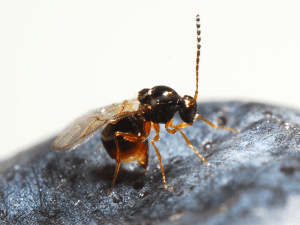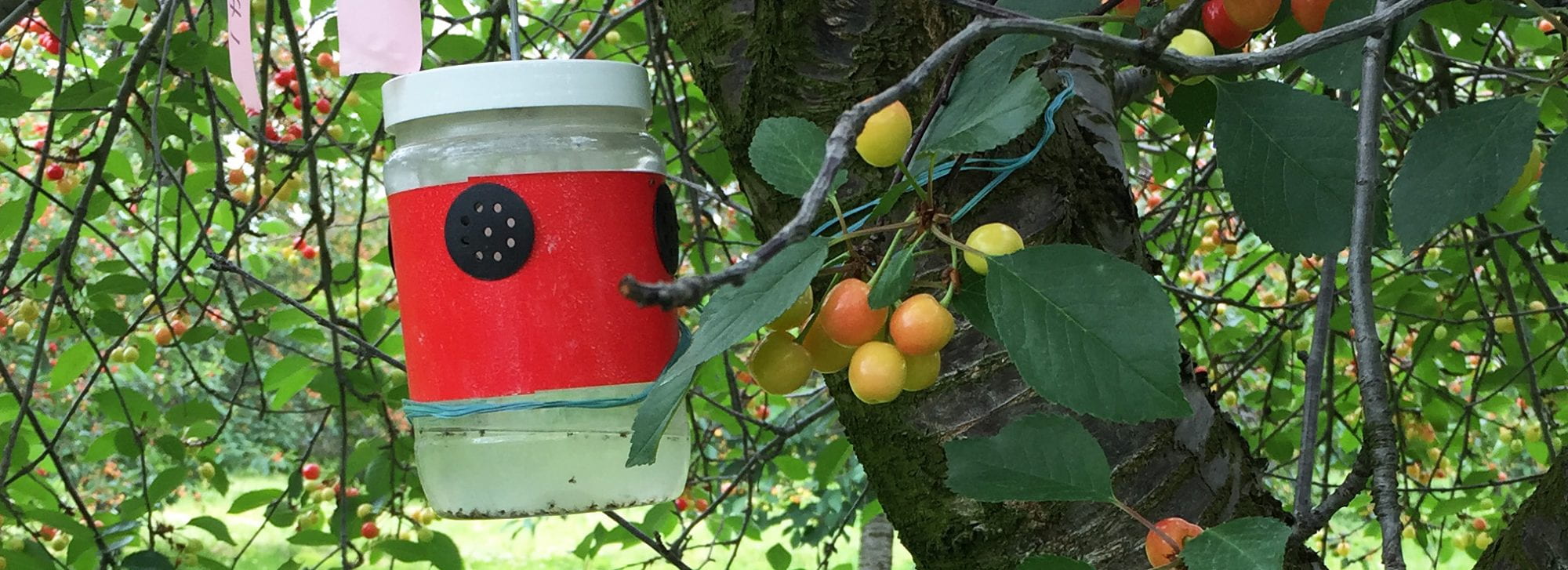Seven sites in the five counties of Albany, Columbia, Dutchess, Saratoga, and Schuyler are now at sustained catch of SWD — that is, the insect has now been detected in traps two weeks in a row. At two of the locations numbers are still below 5, but at all others they are 5 and above...up to 75 total caught at one location. Most locations have four traps. Details are below:
Albany County - summer raspberry, 18 females and 57 males, total 75 SWD, traps checked on June 28, 2021 by Natasha Field, ENYCHP.
Columbia County - tart cherry, 2 females and 12 males, total 14 SWD, traps checked on June 28, 2021 by Natasha Field, ENYCHP.
Dutchess County - sweet cherry, 17 females and 14 males, total 31 SWD, traps checked on June 28, 2021 by Sarah Tobin, ENYCHP.
Saratoga County - blackberry, 3 females and 4 males, total 7 SWD, traps checked on July 1, 2021 by Natasha Field, ENYCHP.
Schuyler County - blueberry, 0 females and 3 males, total 3 SWD; blueberry 1 female and 0 males, total 1 SWD; raspberry, 2 females and 3 males, total 5 SWD; traps checked by Juliet Carroll, NYS IPM.
Time to plan and implement a solid insecticide spray program
Insecticide treatments will kill SWD adults and thereby reduce egg laying. Spray programs should begin when susceptible fruit crops are ripening and ripe. Treatments should be applied at least every seven days and repeated in the event of rain. Choose the most effective insecticides with pre-harvest intervals (PHI's) that work for your harvest schedules. Rotate insecticides according to their modes of action. SWD insecticide quick guides are on the SWD Management web page, fruit.cornell.edu/spottedwing/management/. Check the Cornell Guidelines for your crop (cropandpestguides.cce.cornell.edu/) for the latest list of approved pesticides. Always read and follow the pesticide label instructions.
Hoping for a day when SWD has its own set of natural enemies?

That day may be on the horizon! The Sustainable SWD Management, swdmanagement.org/, project team will be gearing up to release parasitoids, like Ganapsis brasiliensis, a tiny little wasp that doesn't sting and instead uses its "stinger" to lay eggs on the SWD larvae that are inside your fruit. Brilliant! Project team members will release these biological control agents—parasitoids of SWD—from SWD's homeland and assess survival and effectiveness as an alternate management tactic. Stay tuned.

